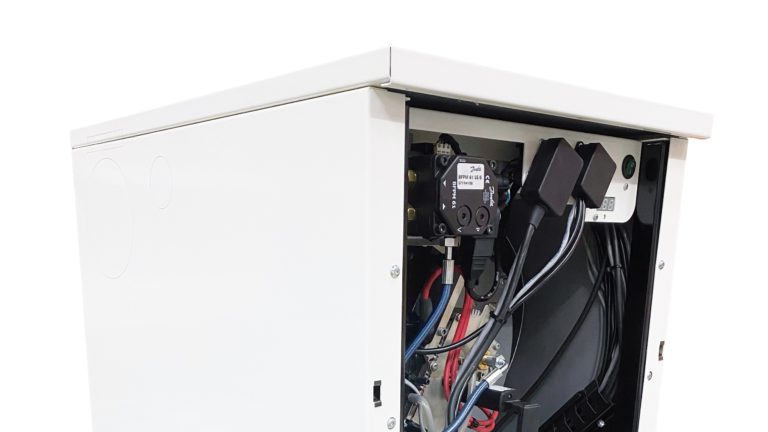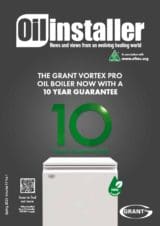
What does ADL really require of us?
Full room-by-room heat loss calculations to demonstrate the correct sizing of replacement boilers.
Q: Can I simply measure the existing radiators to size the replacement boiler?
A: No. Who knows if the existing radiators were sized correctly in the first place?
Q: Can I just measure the volume of the building or room and estimate the boiler size from that?
A: No, not to be able to demonstrably prove that the replacement boiler is the correct size, considering different room temperatures and wall, floor, ceiling U values and different air change rates for different room usages.
Q: Do I have to carry out full room- by-room heat loss calculations for quotation purposes?
A: Not necessarily, as quotations are not covered by the Building Regulations, however, full calculations will still be needed, should you win the job, to demonstrate installation compliance with the Building Regs.
Q: Why can’t I replace an existing boiler with one the same size?
A: How do you know whether the existing boiler is the correct size today? Property improvements such as replacement UPVC double glazing, loft and cavity wall insulation added to a property over the year can leave a boiler, which was originally correctly sized, twice the size that the building now needs it to be.
Q: What’s the point in all this when oil fired boilers are fixed output based on an external temperature of say -3C, meaning that the boiler when ‘correctly sized’ will pretty much always be running at an output grossly greater than necessary, i.e. oversized?
A: Good question. That’s why at EOGB we invested heavily in first creating a domestic-sized low NOx fully modulating (15 set points) package burner, which can be controlled by OpenTherm load- compensating controls. Then we created a specially designed heat exchanger to accompany full room-by-room heat loss calculations and 55C max flow temperature system design, for new wet central heating systems installed in either existing or new build dwellings.
Q: If I replace night storage heaters with a wet central heating system in an existing property house do I need to comply with the design max 55C flow temperature?
A: Yes, as this is a completely new system the requirements apply irrespective of whether the new system is installed in a new or existing property.
Q: Are there any times where this does not apply?
A: Yes, this does not apply if it is an existing system i.e. it is not newly installed or where a wet central heating system is not fully replaced in an existing building.
Q: A 55C max flow temperature design limitation means that oil boilers are effectively banned from new build because of their traditional mild steel construction or else they would rot out in no time!
A: I understand your concern and hope that you will appreciate that I cannot speak for other boiler manufacturers, but here at EOGB with the Sapphire boiler we designed out any potential and historically demonstrated material failure problems associated with oil boilers by simply adopting a bespoke fully stainless steel 316Ti heat exchanger, which has been tested and proven to be able to operate on high, medium, and low water temperature heating systems.
So confident are we in the exceptionally high grade of stainless steel used that we even guarantee them for 25 years! An alternative fuel and/or technology applied to an existing dwelling shall not result in an increase in emissions from that property.
Q: How do I know if I can use a Sapphire boiler to replace other boiler and fuel types like LPG regarding emissions?
A: The information you require can be found in Table 12 of SAP 10.2. This gives you the carbon emission values for the fuel and its primary energy factor to enable you compare what is existing to what is proposed, and to replace it to make sure that it is compliant. We have calculated the values for the Sapphire boiler for you as follows:
Sapphire Kerosene boiler
0.298 kgCO2e kWh / boiler eff of 93.0% = 0.32kg CO2e/kWh
Sapphire HVO boiler
0.036 kgCO2e kWh / boiler eff of 93.0% = 0.04kg CO2e/kWh
Biomass boiler
0.053 kgCO2e kWh / boiler eff of 75.0% = 0.07kg CO2e/kWh
This clearly demonstrates that you could not compliantly replace a biomass boiler with an oil boiler as the emissions per kWh would be greater, as expected from fossil fuel. However, applying an HVO Sapphire boiler would be compliant and as is demonstrated here, could be approaching 60% less environmentally damaging in terms of emissions than a Part L complaint biomass boiler!
Sapphire Kerosene/HVO boiler primary energy
Kerosene/HVO primary energy
1.180 kgCO2e kWh / boiler eff of 93.0% = 1.269 kWhPE/kWh
Biomass boiler
1.325 kgCO2e kWh / boiler eff of 75.0% = 1.701 kWhPE/kWh
Again, this clearly demonstrates that a Sapphire boiler, either kerosene or HVO, outperforms a building regs compliant biomass boiler by a 25% reduction in primary energy.
